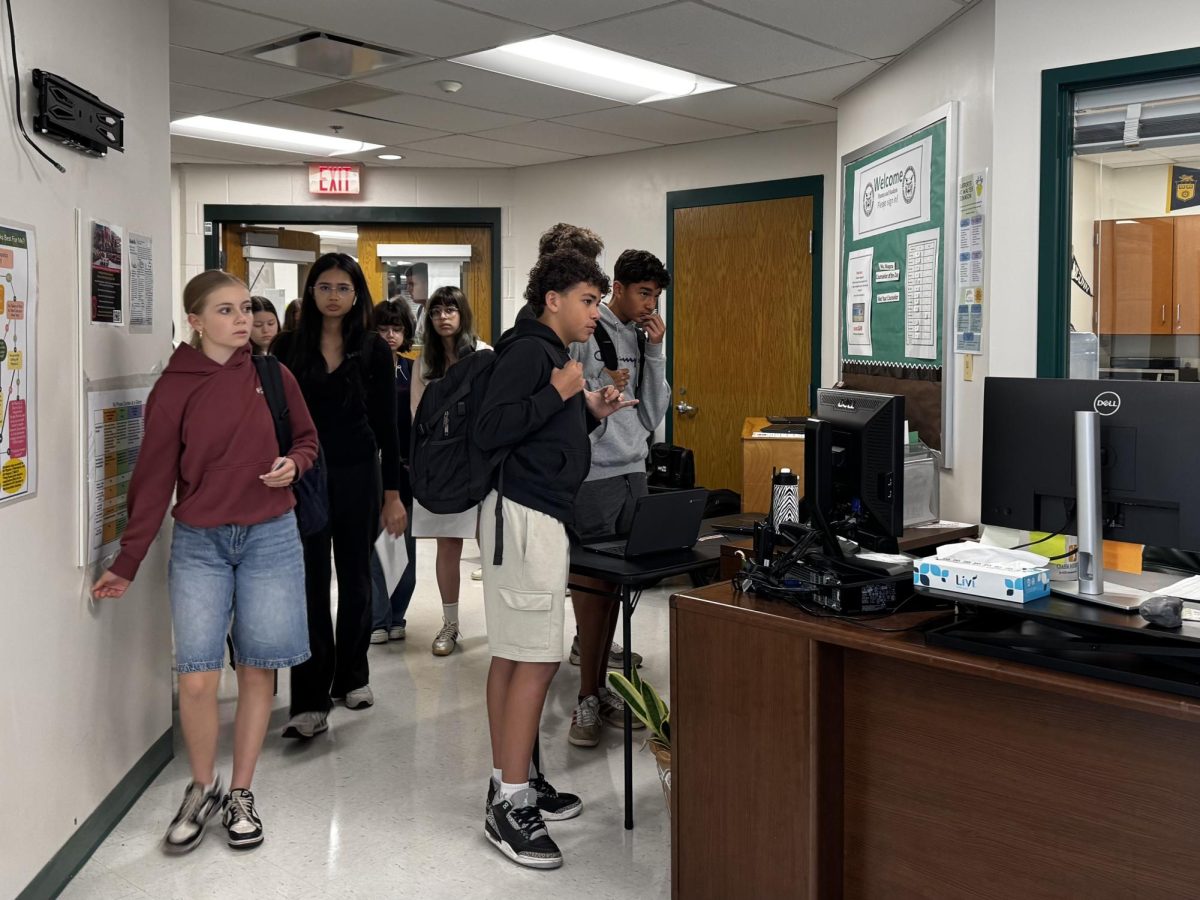Sophomore Danielle Armstrong went to Stone Ridge for seventh and eight grade, but she never felt like she fit in there.
“It definitely wasn’t welcoming,” said Armstrong of the K-12 all-girls Catholic private school in Bethesda. “All the girls were pretty much one type. If you weren’t preppy and spoiled like that, then you were pretty much an outcast.”
She convinced her parents to allow her to go to her home school of WJ for her freshman year. In part, Armstrong wanted more opportunities to play soccer than she had at Stone Ridge, where she said she didn’t have as good a team to play on as WJ has. She is now happy with her decision and comfortable on campus.
“It all depends on who you are,” she said. “I mean, there are other people like me who just don’t fit into it.”
Academic support teacher Jacki Weise-Schneider found more of an inviting social environment for students in public schools than she did when she taught at the Charles E. Smith Jewish Day School, a K-12 private Jewish school in Rockville.
“There’s more acceptance for a kid who feels different,” said Weise-Schneider. “There’s a certain conformity to private school, and if you’re different, it’s sometimes hard to find your niche.”
Weise-Schneider sees the value in enrolling a child in a religious private school “because you kind of keep that element [of religion] enfolded in the curriculum.”
New science teacher Matt Paushter taught at Potomac private school Bullis for eight years before he came to WJ. He has found that even though class sizes were typically smaller at Bullis, with WJ’s open-lunch, he feels he has more time to see students that he did at private school.
Private schools tend to have a rigorous teaching style. WJ sophomore Jon Artim experienced this first hand as he attended Georgetown Preparatory School, an all-boys Catholic private school in Bethesda, for his freshman year.
“It’s a lot harder to get an ‘A’ there and regular [or] on-level classes at Prep are similar to AP classes at WJ,” said Artim.
Prep’s grading scale is much harder on students than that of WJ and Montgomery County Public Schools. At Prep, 100 to 92 percent is an A, whereas at WJ and in all county public schools, an 89.5 percent or higher is an A. Also, Prep considers anything below a 70 percent in a class failing, which is 20 percent higher than the WJ and county failing mark.
Weise-Schneider finds that the rigor might come from having more materials available. She remembers a parent donating money to buy specialized microscopes she needed for her class.
“It was great,” she said. “But you’re not going to get that in public school.”
Weise-Schneider does miss the sense of community that comes with private school. She liked knowing not only her students, but their parents, who she got to know from seeing quite regularly.
“In public schools, you have more students,” she said. “You don’t have that kind of close contact with the parents.”
However, Weise-Schneider prefers teaching at public school. She says there are better outlets for students who are struggling or have special needs. She also does not like the economic issues that come with a private school education.
“You have to remember that a lot of people are paying big money for private school and so there is an expectation that their children will do better because of that monetary funding,” she said. “And so you get that idea of paying for grades, and so there is a lot of pressure.”
Academic support teacher Diane Sandy used to teach at a residential school in Phoenix, Ariz. called Patterdell. She also noticed that parents were more involved at private school. However, she finds that both public and private schools have a “desire to educate and for students to do well.”
Freshman Georgina Carter, who transferred to WJ after finishing eighth grade at the Lycée Rochambeau, a K-12 French international private school in Bethesda, knew since sixth grade that she would come to public school once she hit high school. Because she is not a native French speaker, the Baccalaureate program at Rochambeau would be a big challenge for her. She has found that both schools have good quality teachers. She likes that she can choose her friends from a large student body.
Students have found that private school kids hold public school kids with disdain. Artim was appalled by this.
“Kids at Prep treated me differently,” said Artim, who had gone to public school prior to his single year at Georgetown Prep. “Most of the kids there have been going to private school all of their life and looked at me kind of like, ‘what is this public school kid doing here?'”
Armstrong also found this type of attitude to be true among her friends at Stone Ridge during eighth grade when students would ask each other where they were going to high school.
“I would say Walter Johnson, and then they would say, ‘isn’t that a public school?'” she said. “They would have a kind of disgusted look on their face. They look down at public schools, like they are dirty or something.”
Despite all of the negative remarks, Armstrong feels right at home at WJ. She likes the fact that she is just a “new kid,” nothing more and nothing less.
*Staff writer Ryan Lynch contributed to this report
|
FOR MORE ON THIS TOPIC. . .
Just this year, the D.C. area has had an increase in students transferring from private school to local public schools. To read about this rise in transfers, check out the The Washington Post. |








